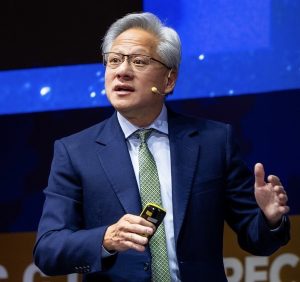Dixon Eyes Display Manufacturing Boost with China’s HKC, Pushes Smart Factory Plans

Photo Credit: @sunildixon
Dixon Technologies, one of India’s top contract manufacturers, has applied for government approval to partner with Chinese company HKC for manufacturing display modules used in smartphones, laptops, and televisions. This move aligns with Dixon’s strategy to expand its manufacturing footprint in India and promote high-value electronics production.
According to Executive Chairman Sunil Vachani, the approval is being sought under Press Note 3 (2020), which mandates prior government clearance for any foreign investment originating from countries that share a land border with India. These countries include China, Nepal, Bhutan, Pakistan, Bangladesh, Afghanistan, and Myanmar.
HKC is known globally for its strength in display technologies, and the proposed partnership will focus on setting up a new display module manufacturing facility in Noida, Uttar Pradesh. HKC is expected to take a minority stake in the joint venture. Vachani revealed that the application for government clearance has already been submitted.
The move is part of a broader vision by Dixon to deepen India’s electronics manufacturing ecosystem, not only through international tie-ups but also by scaling capabilities in critical components like diodes and others. The company is actively seeking further alliances to bring advanced manufacturing capabilities into the country.
Vachani, who was speaking as part of a business delegation accompanying Union Commerce and Industry Minister Piyush Goyal, also highlighted Dixon’s growing focus on smart manufacturing and Industry 4.0. The company has already partnered with French aerospace and software giant Dassault Systems to accelerate its digital transformation journey. Dixon aims to upgrade all its factories into smart factories that use digital technologies such as IoT, AI, and automation for real-time data analytics and machine communication.
This transition towards smart manufacturing is aimed at earning Dixon the prestigious “lighthouse factory” recognition—a global benchmark for factories that lead in technology integration and innovation. Vachani said Dixon has committed a large budget for digital transformation and is implementing manufacturing excellence software in collaboration with Dassault across all its plants.
Regarding India’s Production-Linked Incentive (PLI) scheme for electronic components, Vachani expressed satisfaction with the government’s current list of eligible components, which already includes high-value parts such as cameras and displays. He stated that Dixon is either independently or through partnerships, rolling out production for several of these components, including batteries.
The company’s total investment under the PLI scheme is expected to exceed ₹1,200 crore, with an additional ₹400 crore allocated for the display module plant in Noida—a greenfield project that will strengthen India’s local component production capabilities.
In another major development, Dixon has entered into a joint venture with Vivo India to establish an OEM facility focused on smartphone and electronics manufacturing. Dixon will hold a 51% majority stake in this partnership, while Vivo India will own the remaining 49%. The combined capacity of Dixon’s existing and new facilities is projected to reach up to 100 million mobile phones annually.
Through these strategic partnerships and investments, Dixon is positioning itself at the forefront of India’s electronics manufacturing transformation, aligned closely with the government’s vision of an Atmanirbhar Bharat (self-reliant India).
Source: ET Telecom




